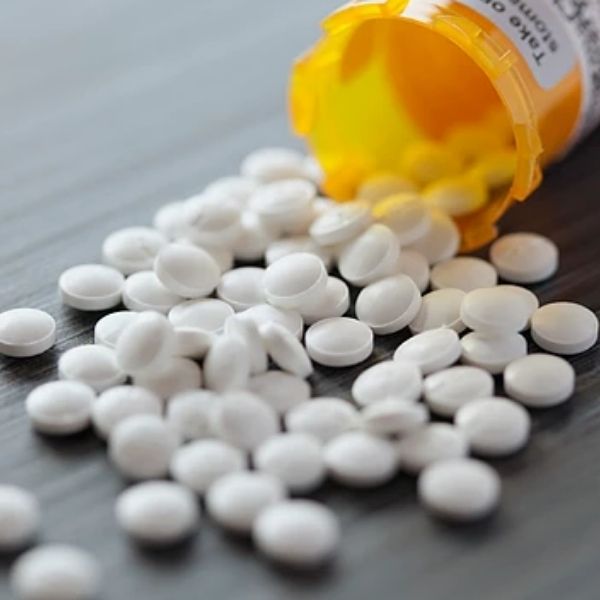One of the hardest things to put into perspective as a healthcare provider is why a patient should choose conservative care BEFORE moving onto drug based forms of care. It’s a hard topic to tackle, especially in the United States where nearly the entirety of our healthcare system is built on opioids. For one, it can be very tempting for patients to want to believe that if they take this special pill then all of their pain will go away. Additionally, people are very busy and often intimidated by the idea that they need to be putting in some of the work to get better.
BUT, hard as this issue is to tackle, tackling it is SUPER important. There are a lot of reasons why we need to be approaching our health from the conservative angle first. And it begins with understanding what opioid care is, how it works and WHY it has become the primary approach to healthcare in our country.
What is an opioid?
According to the National Institute of Drug Abuse: “Opioids are a class of drugs that include the illegal drug heroin, synthetic opioids such as fentanyl, and pain relievers available legally by prescription, such as oxycodone (OxyContin®), hydrocodone (Vicodin®), codeine, morphine, and many others.”
How do opioids work?
Inside our bodies we have what are called nociceptors. These are specialized nerves that detect and communicate pain to the brain. When a “noxious (pain causing) stimuli” bonds to a nociceptor, a signal is then sent to the brain to let you know that you are in pain. The body does this so that you stop doing whatever is causing your pain so that the body isn’t damaged. In this way, pain is good.
When you take an opioid, the opioid bonds to the same part of the nociceptor as a noxious stimuli. Unlike noxious stimuli, when an opioid bonds to a nociceptor it doesn’t cause a pain signal to be sent. Instead, the opioid blocks the area so that noxious stimuli can’t bond to it. It’s effectively a placeholder. The result is that no pain signal is sent to the brain. This is the pain relief that patients experience when taking opioids.
The problem is this: the thing causing the pain hasn’t stopped. All that’s stopped is the patient’s ability to feel the pain because the nociceptors aren’t sending pain signals. A lack of pain means that we don’t know that we need to stop doing what we’re doing. As a result we may end up doing something that ultimately causes damage to our body. Remember, pain is designed to stop us from causing damage by telling us to stop.
In a nutshell this is the tradeoff with opioid care. On one hand, yes it diminishes our pain. But on the other hand, it diminishes our pain! It’s also important to note that opioids, like all drugs, are substances that our body develops a tolerance to. This means that a given opioid prescription that helps today, may not be nearly enough tomorrow. Also, and this is maybe the most important part, opioids are ADDICTIVE! Which brings us to…
THE OPIOID CRISIS!
Since the 1990’s the United States has prescribed opioids for pain management at a terrifyingly high rate. This has led to a dramatic increase in drug addiction and death by overdose in the decades since the opioid crisis began.
Let’s look at the research!
● Despite the United States making up only 4.6% of the world’s population, Americans consume 80% of all opioids produced world wide.
● When it comes to Hydrocodone (Vicodin®), that number becomes 99%!!!
● In 2018, an average of 128 people died from opioid overdose EVERY SINGLE DAY!
● Around 80% of heroin users in the United States began as opioid patients, NOT as recreational drug users
● Around 8-12% of opioid patients will develop an opioid addiction or disorder
● According to data collected between 2005 and 2011, an estimated 14-22% of women filled an opioid prescription during a pregnancy
● The number of babies born, per year, addicted to opioids have tripled between 1999 and 2003
● Every 15 minutes a baby is born suffering from opioid withdrawal
Those are some terrifying statistics! So obviously with a form of medication that only prevents the signaling of pain, rather than fix the cause of pain and that is also this addicting would only be used to treat severe conditions right? Well..
Here are some of the reasons patients are prescribed opioids?
● Acute Pain
● Chronic pain
● Muscle spasms
● Neck pain
● Low back pain
● Disc herniation
● Joint pain
● Tooth extraction/pain
We have a big problem in our country. We have made it the norm to treat a very large variety of pain conditions with a form of care that at best gives you some reprieve from pain but that doesn’t do anything to address the cause of pain. All while leaving you open to developing an addiction, or failing that, developing a tolerance which will result in an increased dosage, which in turn will increase your odds of developing an addiction!
We need to understand that when we go down the opioid path it should only be AFTER we’ve tried other more conservative methods of care. Don’t get me wrong, I’m not saying there’s no place for opioid care at all. I’m just saying that it needs to be restricted to only AFTER everything else has already been attempted. Tune in next week for Part 2 where we’ll be discussing the various conservative approaches to healthcare as well as what our expectations for healthcare should be.





